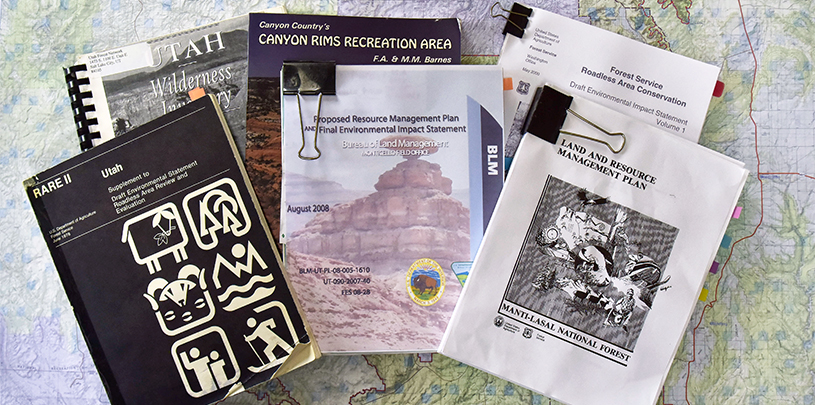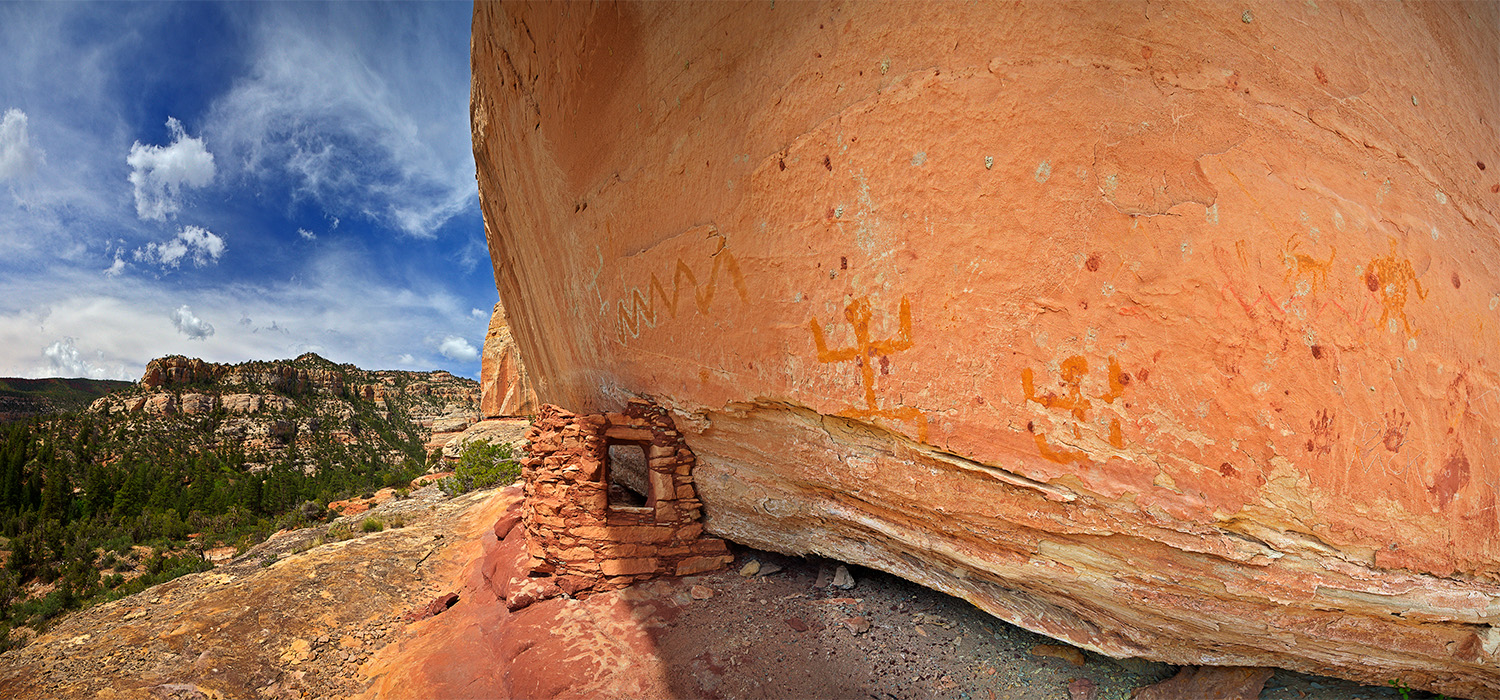
 by Tim Peterson, Utah Wildlands Director
by Tim Peterson, Utah Wildlands Director
The Ringling Brothers Circus may have ceased operations last year, but the sideshow and the carnival barker live on. In public lands politics, the role of the hype man is now being played by politicians seeking to divert the public’s attention from their actions to remove protections from public lands and gut our national monuments.
They issue a barrage of calls, insisting that cutting 2 million acres from national monument protection at Bears Ears and Grand Staircase does no harm because so many other laws, policies, and regulations already in place make national monument designations unnecessary.
Inside and outside the beltway, you might hear:
See the amazing wilderness study area! Right this way to the stupendous Forest Service inventoried roadless area! Gasp in awe at the Archaeological Resources Protection Act! But pay no attention to the Antiquities Act behind the curtain! Trust me, good people, your public lands are still protected!
This may seem like fanciful exaggeration, but Interior Secretary Ryan Zinke actually said while attending a hunting expo in Salt Lake City on February 9, 2018: “Here's what you don't hear, there isn't one square inch of Bears Ears that was removed from any federal protection.”
If we pull down the richly colored backdrop behind the hype men, designed to fool the eye, we begin to see that things are not what they seem. Let’s examine what different designations mean, and why President Trump’s proclamations for Bears Ears and Grand Staircase leave lands unprotected, even though they are still subject to some protective laws and policies.
Wilderness is a permanent designation made by Congress under the Wilderness Act of 1964. Wilderness areas prohibit new road construction, motorized and mechanized vehicles, and bar activities like logging and mining. Wilderness lets the land be self-willed, mostly without significant intervention in management.
In the more than 3 million acres of the original Grand Staircase-Escalante and Bears Ears, there exists but one designated wilderness area, the 46,348-acre Dark Canyon Wilderness, designated by Congress in 1984. While Dark Canyon remains a wilderness area after Trump’s actions (it would take an act of Congress to remove the designation), the protected area represents just 1.4 percent of the two original monuments.

Wilderness study areas, inventoried roadless areas, and areas of critical environmental concern are all administrative designations made not by Congress, but by land managers through public planning processes. As such, they are subject to revision, while national monuments and wilderness are intended to be permanent.
Wilderness study areas (WSAs) on Bureau of Land Management lands prohibit new mining and drilling, and can limit motorized and mechanized vehicle use. They are managed not to impair their wilderness character until Congress acts to make them permanent. However, WSAs contain no special management provisions to prioritize the protection of cultural and archaeological resources.
Utah Governor Gary Herbert tries to sell the idea that WSAs still protect the lands removed from national monument status, but the argument falls apart when we look at the facts.
All or part of 16 wilderness study areas in Bears Ears and Grand Staircase were removed from overarching national monument protection by President Trump’s proclamations, but all or part of 13 WSAs retain national monument protection inside Trump’s boundaries. If WSA protection is sufficient, why didn’t President Trump remove national monument status from all of the WSAs?
Forest Service inventoried roadless areas prohibit commercial timber harvest and road construction and reconstruction under limited conditions. There are no inventoried roadless areas in Grand Staircase (there are no Forest Service lands there), but seven inventoried roadless areas at Bears Ears saw their monument protections removed by President Trump, while one remains inside the Shash Jaá unit of the reduced monument. Inventoried roadless areas contain no provisions for the elevated protection of cultural resources, and the record shows that they don’t stop destructive activities like mining. For example, in Colorado, the Forest Service just approved coal mining in the Sunset Inventoried Roadless Area, south of Aspen.

Bureau of Land Management areas of critical environmental concern are areas determined to contain special values, but their management terms and restrictions differ from one to another. There are several small areas of critical environmental concern totaling roughly 33,000 acres that lost their monument status at Bears Ears under Trump’s proclamation. All but one of them (Valley of the Gods Area of Critical Environmental Concern) are open to oil and gas development, and all are open to mining. There are no areas of critical environmental concern located on the lands cut from Grand Staircase. Less than one percent of the land area cut from Bears Ears is an area of critical environmental concern closed to oil and gas leasing.
Many other laws govern cultural resources on public and indigenous lands, and monument opponents have held these up as sufficient, but they are not perfect. These laws include the Archaeological Resources Protection Act, the Native American Graves Protection and Repatriation Act, and the National Historic Preservation Act.
The Archaeological Resources Protection Act (ARPA) forbids the removal of cultural objects from federal lands without a permit. It also forbids the sale, purchase, exchange, transport, or receipt of looted cultural items. Those found guilty of violating ARPA can face fines or imprisonment, but the record is poor, and prosecution is exceedingly difficult. A massive raid targeting traffickers of cultural objects (some looted from Bears Ears) in 2009 resulted in no jail time for any of the violators.
The Native American Graves Protection and Repatriation Act (NAGPRA) provides for the return of cultural items to lineal descendants and culturally affiliated Indian tribes. Cultural items include human remains, funerary objects, sacred objects, and objects of cultural patrimony. The complex NAGPRA process often only catches these objects after they have been excavated, and it can take years for objects to be returned. NAGPRA deals with the return of items, not the protection of items that have not (yet) been disturbed.
The National Historic Preservation Act (NHPA) requires federal agencies to evaluate the impact of all federal projects on historic properties, and requires consultation with affected Indian tribes. This method of consultation is often inadequate, and its failure in practice was part of the reason the five tribes (Hopi, Navajo, Ute, Ute Mountain Ute, and Zuni) came together to push for national monument status for Bears Ears and for collaborative management. They wanted more and better consultation.
These laws all deal with cultural objects in isolation and do not carry the weight of protection within the landscape that overarching national monument protection provides.

Moqui Canyon rock art cut from Bears Ears National Monument. TIM PETERSON
National monument designation is like the big top at the circus — covering and protecting all inside the tent. When presidents proclaim monuments, they do so for what are known as “monument objects.” These are: “historic landmarks, historic and prehistoric structures, and other objects of historic or scientific interest…” Individual monument proclamations identify what these objects are, and include an administrative record that details the objects that have been documented.
National monuments are managed to prioritize the protection of these objects above all other resource uses, so as to keep them unimpaired by consumptive activities like mining, drilling, and logging. When national monument status is removed, the lands revert to the status they held before designation, and the protective tent that prioritizes protection of the monument objects is taken down, leaving lands that are not subject to other protective designations vulnerable to damage from destructive uses of the public lands. The overarching reasons for which the monuments were designated are lost.
Hundreds of thousands of acres of land removed from national monument status by President Trump do not carry any of the protections above, even though they do contain abundant “monument objects.” One need only read Trump’s proclamations to see the real goal: opening public lands to mining and fossil fuel drilling.
Trump’s December 4, 2018 Presidential Proclamation Modifying the Bears Ears National Monument states:
At 9:00 a.m., eastern standard time, on the date that is 60 days after the date of this proclamation, subject to valid existing rights, the provisions of existing withdrawals, and the requirements of applicable law, the public and National Forest System lands excluded from the monument reservation shall be open to:
This means that the lands not subject to other prohibitions outlined above are open for business as of February 2, 2018.
In a phrase some attribute to circus showman P.T. Barnum, “There’s a sucker born every minute.” Those who want to drill, mine, and give away our protected public lands to their friends in industry are trying to take you for a slack-jawed rube. Don’t be a sucker — stand up for your protected public lands!
On October 8, 2021, President Biden restored full protections to Bears Ears and Grand Staircase-Escalante national monuments. Send a personal note of thanks to President Biden.

Cultural landscapes are full of stories, artifacts, and resources to appreciate. Here's how ›
80% of Arizona voters support Baaj Nwaavjo I'tah Kukveni National Monument, according to a new poll.
Read MoreUtah voters strongly support national monuments in general, and Bears Ears and Grand Staircase-Escalante in particular, a new poll shows.
Read MoreA small victory in the legal case challenging Daneros uranium mine, near Bears Ears National Monument.
Read More